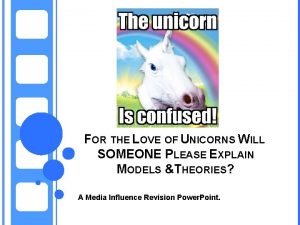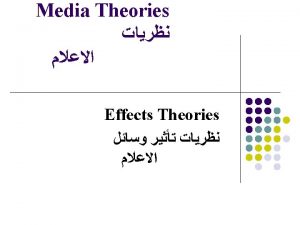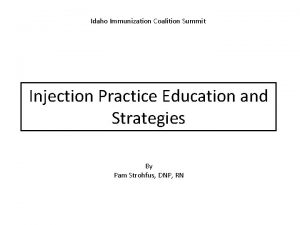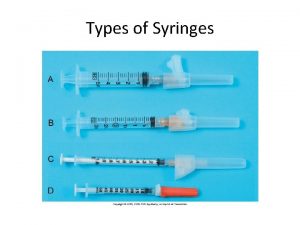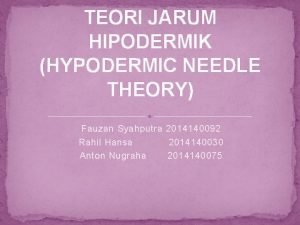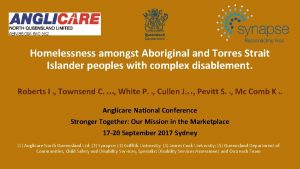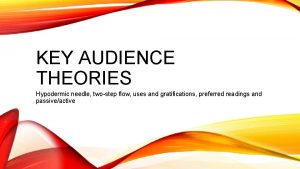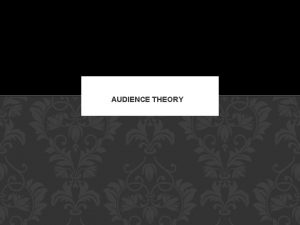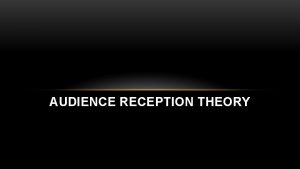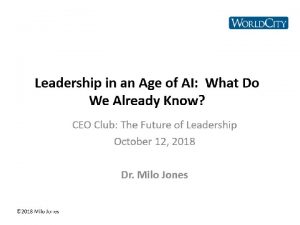KEY AUDIENCE THEORIES Milo Quigley Hypodermic needle model







- Slides: 7

KEY AUDIENCE THEORIES Milo Quigley

Hypodermic needle model. ◦ The theory is a linear model of communication and talks about media’s power on audience. ◦ As a reference to the title, the ”Hyodermic needle” injects people with information relating to the media. ◦ It is known by many other names, such as: magic bullet theory and transmission-belt model, etc. ◦ It was promoted in the 20’s and 30’s by a man called Harold Lasswell. It was used firstly as a way to sway the publics opinions on certain areas. And it was also used to sway the publics behavior.


Active/Passive. ◦ These are the two different schools of thought focused on the ways in which audiences consume media texts – either actively or passively. ◦ It can be influenced by many different factors including, family influences, beliefs and values, culture and education. ◦ The passive audience theory suggests that the audience members do not question or intellectually engage with what they see in the media, they just accept it. ◦ The active audience theory suggests that the audience interacts with media text to create meaning, which is in comparison with the passive theory.


Two-step flow model. ◦ This model was first introduced by Paul Lazarsfeld, Bernard Berelson and Hazel Gaudet and focused on the process of decision making. ◦ It suggests that the audiences’ decisions and opinions are influenced by opinion leaders who in turn are influenced by mass media, which can be compared to the hypodermic needle model which suggests that the mass media has a direct influence on the audience. ◦ The information provided a pathway for further research to be implemented on other mediabased models.

